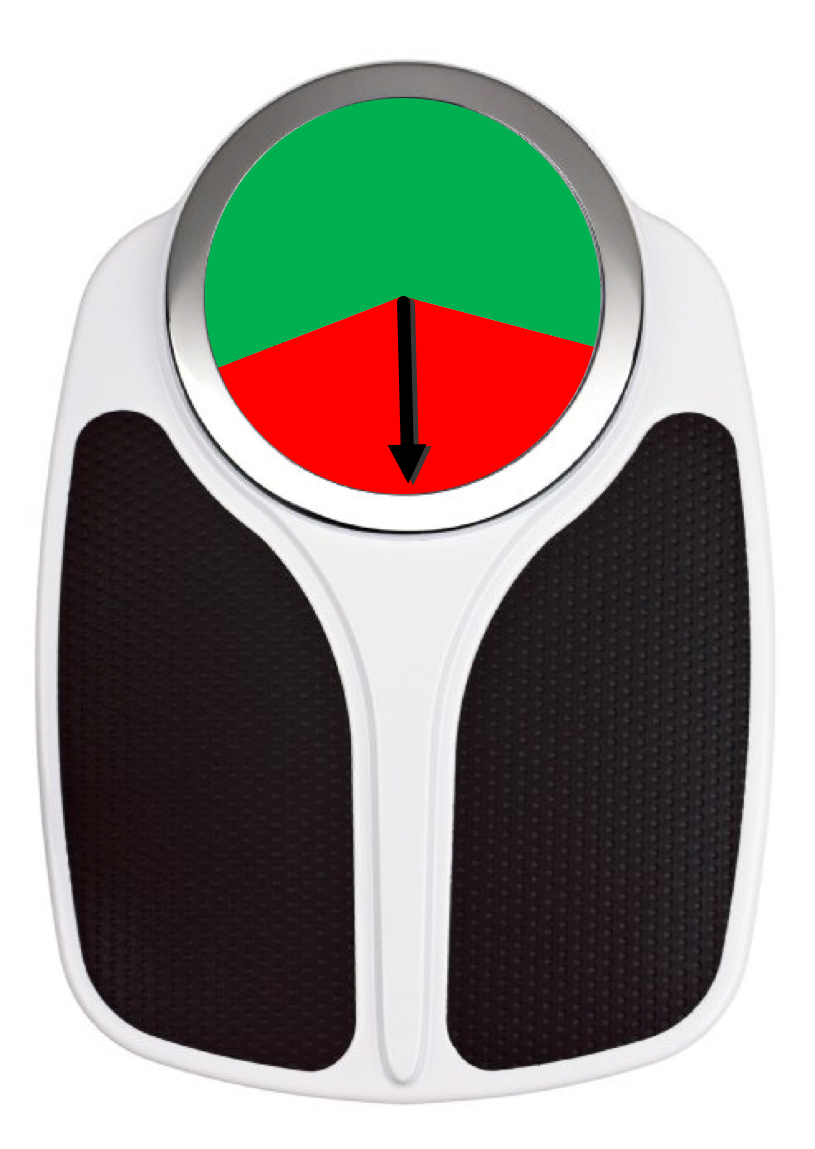Several years ago, my son and I went zip-lining. For safety reasons, riders had to weigh between 60 and 240 pounds. For the “weigh-in” the ride operators lined the group up and, one at a time, we’d step on the scale. Despite the long line, the process went very quickly. When it was my turn, I realized why. They weren’t actually checking our exact weight. They didn’t need to. Their decision was much more simple and so were their data needs. The owner made a small but brilliant modification to the scale.

This minor change better aligned the precision of his data and his decisions. The result: a much more efficient decision-making process.
Your data should drive decisions and actions. The more steps it takes to go from data to decision, the slower the process. Having the actual numbers on the scale would have slowed the process down. Even though they didn’t need it, the ride operators’ brains would have taken the extra time to process the number. That’s just how our brains work. While the slow down on any one person isn’t large, it adds up quickly when you are processing a queue of riders.
More importantly, it’s distracting. Our brains respond to change. Overly precise numbers change all of the time. When we see that a number has changed from last month to this month, we pay attention to it. We think about it. Often we think about the change and what might have caused it before we think about whether the change matters. That’s inefficient.
For example, I was once working with a team that was reviewing employee engagement results. They spent 45 minutes arguing and debating a .05 change on a question (the question’s responses ranged from 1 to 5). This was a total waste of time. From a practical standpoint, there was no real change in the question[1]. From an employee engagement perspective, a change in the 1/100ths place doesn’t make a difference. I would even argue that a change in the 1/10ths place might not matter. Would you respond differently to a team with an engagement score of 3.7 versus one with a score of 3.8?
Of course, there are decisions and industries where 1/100th can be the difference between success and failure. If you are engineering tiny gears, 1/100th of an inch might be the difference from the gear working or not.
The ideal level of precision is when a change in the number signals a need for action. If the number can change without you having to act, you probably have more precision than you need. Get rid of the extra precision.
Here is a simple trick to figure the appropriate level of precision:
- Write out the metric to the usual number of places to which you report (e.g., tens, ones, tenths, hundredths, etc.)
- Change the number at the furthest right to a 9 and then to a 1
- Ask yourself whether you would make a different decision based on those new values
- If your decision wouldn’t change, you don’t need that level of precision
- Round off the the next level of precision
- Repeat the process until changing the furthest number to the right would yield a different response.
Reporting at the right level of precision will save you time and increase your decision-making effectiveness. It’s just not about rounding off to the right place either. As the zip-line owner showed, sometimes the right level of detail is as simple as assigning your data to a category (e.g., ok to ride/not ok to ride, hitting target/missing target, passing/failing). When determining how much precision you need, don’t start with your data. Start with your decision. You may be surprised at how much more simple you can make things.
[1] You may be wondering about how statistically significant numbers play into all of this. After all, a very small change in a number can result in a statistically significant finding. Might we lose things if we round off results that were statistically significant? I don’t believe so. Statistical significance only measures whether a change is real. It doesn’t measure whether that change matters. In the world of data-driven decision making, real changes that don’t matter are of no use. For more on the difference between practical and significant significance, check out my article, It might be significant but that doesn’t mean it matters.
————
Brad Kolar is an executive consultant, speaker, and author with Avail Advisors. Avail’s Rethinking Data workshop will help your leaders become more efficient and effective data-driven decision-makers.

